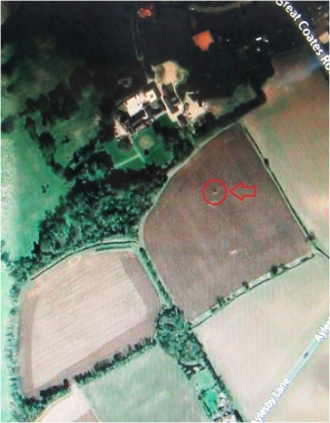I have mentioned before that where I live is very flat and the farming is intensive arable. Hedges and fences have gone to make bigger more economically productive fields that grow wheat and barley and rape.
A few trees have managed to survive the removal of the hedgerows and the expansion of the fields.
Click on an image to scroll through the Gallery…
This is a tree that really intrigues me. It is a solitree in a big field and for some reason it has been left there and not only that it has a metal tree guard around it to protect it…
This is the field where it stands,
I have no explanation…











I imagine the tree is outstanding in its field, and hence why it remains.
LikeLiked by 3 people
That is one possible explanation.
LikeLike
I like your humour!
LikeLiked by 2 people
The ‘solitree’ – what a lovely word – is fairly common round here in North Yorkshire too. Part of an ancient field boundary? Dunno, but I’m glad these trees are left in place.
LikeLike
As far as I can make out it isn’t even an old tree. I mean, it isn’t the Major Oak or anything. Maybe it has sentimental value to the farmer?
LikeLiked by 1 person
Whatever his reasons, good on him.
LikeLiked by 1 person
That is odd, isn’t it?
LikeLike
I think so. It is just in the way of farming the entire field. Some one will know why I am certain.
LikeLiked by 1 person
Most probably a witch’s tree I should think, or even a tree for the fairies to dance round. What sort of tree is it? Hawthorn is often a sacred plant in English country villages.
LikeLike
It could well be hawthorn John. A good suggestion. The village has artesian wells perhaps the tree marks the spot?
LikeLiked by 1 person
Curious
LikeLike
Indeed.
LikeLiked by 1 person
Perhaps it’s one of the few remaining Elm trees. Do you remember when a few years ago we lost many to Dutch Elm disease?
Just a thought, but I don’t remember anyone blaming it on the Netherlands then again Trump doesn’t live here! BUT by coincidence, the disease was thought to evolved in Asia! 😂
LikeLike
A few years ago I walked a stretch of the Canal du Midi with its famous Plane Trees. They were diseased and dying from a fungus. I read that USA was blamed for that because during WW2 GI ammunition boxes were all infected and it was transported to France. A strange World sometimes!
LikeLiked by 1 person
And Mr Trump would call that Fake News! You’re right, it’s all swings and roundabouts!
LikeLiked by 1 person
A good time to photograph trees. I like the one with the wind turbine, especially. As for the mystery – perhaps some memorial?
LikeLike
Maybe Derrick but it isn’t an especially old tree.
LikeLiked by 1 person
We once buried a dog under a new apple tree. That’s probably where my thought came from.
LikeLiked by 1 person
Whatever the reason I am very happy it is there 🙂
LikeLike
Thanks Becky.
LikeLiked by 1 person
OK, we live in the days of instant information so just a casual perusal yielded the following (in no specific order).
– informal landmark during harvesting
– fruit or nuts tree of some kind for benefit of farmer or wildlife
– perch for birds of prey that might keep field pests down
– possible shade for animals if the field is used for grazing between harvests
– bedrock or other large boulders that are difficult to remove or clear
– marking a well or spring
– sentimental reasons (like initials of loved ones, or an old grave nearby)
– aesthetic appreciation (farmer really likes the looks of the tree)
– intentionally left for the benefit (or for tormenting) the curious
There are more, but the most credible break into two camps; one, the farmer likes the tree, or two, something cause it to be easier to leave than remove.
That looks like a fairly small tree, but it looks (difficult to tell) as if it has boulders near it.
And now, on with my life.
LikeLike
Your suggestion of a spring could be the right one.
Blow wells are a feature of north Lincolnshire, a type of groundwater spring, which is seldom (if at all) found across the British Isles except for the coastal margins of Lincolnshire.
LikeLike
I think there is something zen-like about that tree, Andrew. It speaks to me: “Be here, now.” Scary trees coming up on my post tomorrow. 🙂 –Curt
LikeLike
Taking the opportunity to discover my own backyard as it were, I think I have come up with the answer. This part of Lincolnshire has what are called blow wells which are artesian springs that escape to the surface through fissures in the earth and are a unique feature. There is a patch of boggy soil and grass so I think this may be one of them.
LikeLike
Interesting, Andrew. Glad you found the answer.
LikeLiked by 1 person
Tree makes such beautiful photos. I too have wondered when I see a tree in the middle of a field, why was it spared. Maybe for bees to have a place nearby to pollenate?
LikeLike
Thanks for adding your thoughts!
LikeLiked by 1 person